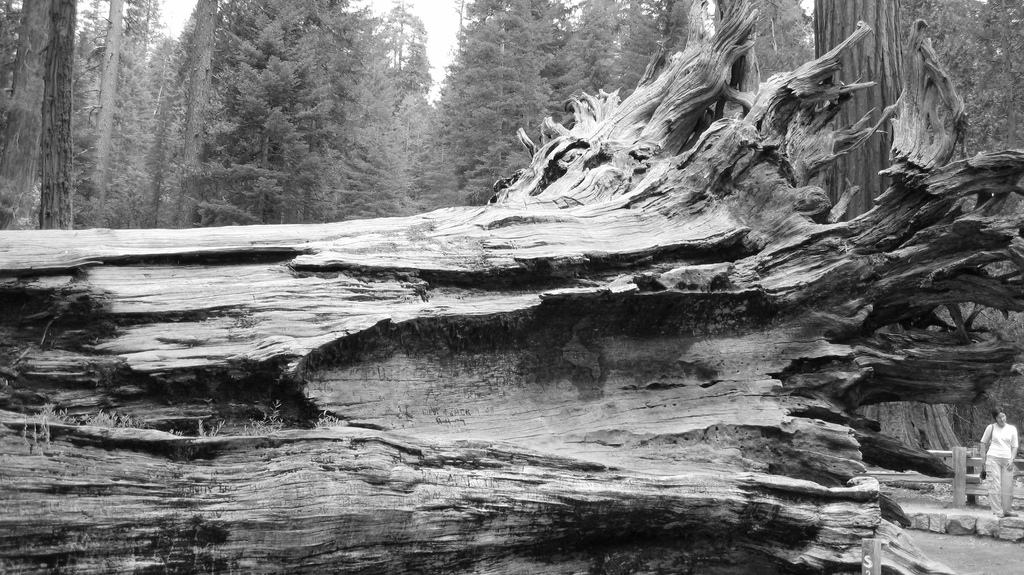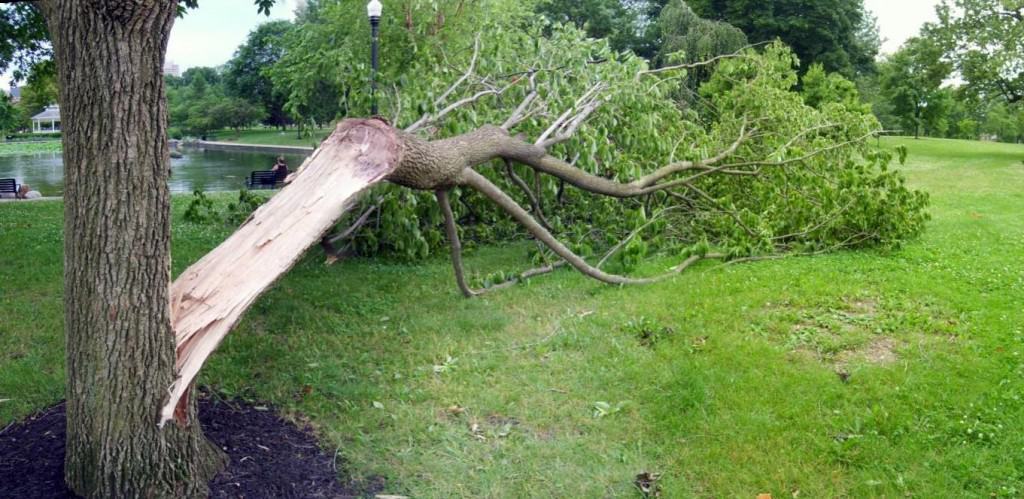A few months ago two 1500 year-old giant sequoias, twinned at their base, fell in California. While not unheard of, this kind of thing certainly doesn’t happen every day—if it did these trees wouldn’t grow to be as old as they are. Decisions were to be made and since this was a tree living within a National Park many government agencies were required to figure out what to do. Should the tree be sawed up and removed? Perhaps a hiking trail incorporated into its corpse? Maybe a tunnel bored through its midsection? Or should it simply be left to lie where it fell?
This past fall in Los Angeles incredible windstorms, powerful instances of the ‘Santa Ana winds’ (a perverted English version of the Spanish vientos de satán—Satan’s winds), swept through the canyons and foothills of Southern California felling trees and power lines across the city. Houses and parked cars were crushed by the weight of large trees suddenly uprooted and overturned. My sister lives in Pasadena, in a particularly hard hit part of the city, and she used the term “war zone” when I asked her to describe the aftermath of the storm. Around the same time here in Chicago (the patron-city of windiness) we had a day of strong wind and a tree in our neighborhood was split in half, ripped almost perfectly down the middle of its trunk. One half was chopped up and hauled away and the other half still stands as if nothing happened, as if it were a conjoined twin recovering from the surgical procedure that undid its twinning.
Rumi, the Sufi mystic poet, says that you should “sell your cleverness and buy bewilderment.” I suppose this is what I was doing as I stood before that split tree trunk. I held the palm of my hand in the hard inverted belly of its open wound and it wasn’t at all what it seemed it should have been. My mind was frozen in awe at the strangeness of it. I was bewildered.
Standing next to that half-there tree I marveled at the dryness of the inside of its trunk. The soft leaves that still hung on its upper branches were clearly water-fed and not yet dried by autumn’s chill. Moisture had been delivered from the soil soaked roots by this substantial trunk, and yet there were no pipes, no viaducts, no discernible presence of water of any kind. The trunk was heavy and strong, recently torn open, and mysteriously dry.
The trunk of a tree does most of its drinking in a wetter season—this was the end of summer after all—but even still, I wondered at the many ways in which trees embody the essential tensions of life. They stand and bend and bow, apparently light and leafy, and then, in a moment, they can topple over and reveal what stood before us the entire time—something incredibly hard and heavy, something of weight.
With all of our hidden truths and contradictions it’s no wonder then how often trees are taken to represent our individual, familial, and social lives. Standing by in silence at 1500 years or more the witness of a tree is a weighty thing indeed. Balanced and wispy like a dancer, when bent beyond their breaking point, they reveal an inner truth they’ve hidden all along, a silent strength and dangerous weight disguised and held together by the simple fact of their being trees.



